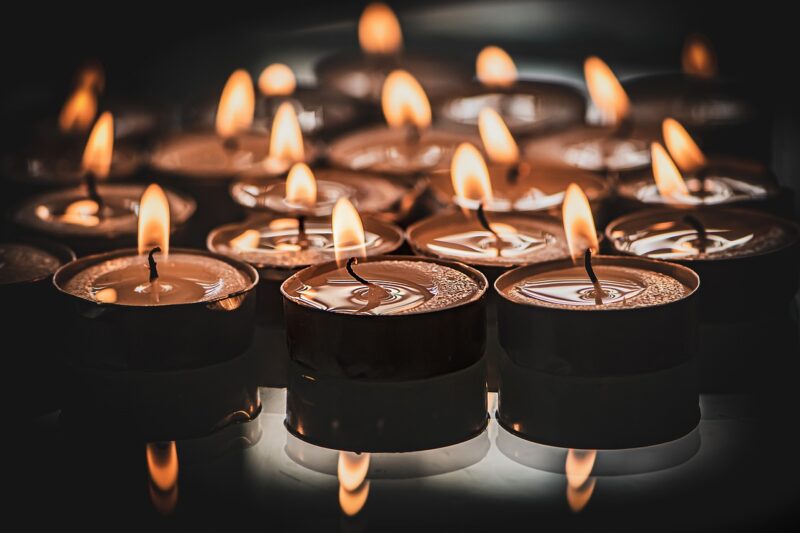
Candles have illuminated our lives for thousands of years, serving not just as practical sources of light, but as powerful symbols of hope, spirituality, and celebration. From their humble beginnings in ancient civilizations to their contemporary roles in daily life and rituals, candles have evolved in form and function. In this comprehensive exploration, we will delve into the rich history of candles, their various uses across cultures, and the profound meanings they carry.
1. The Origins of Candle Making
Candles date back to ancient times, with evidence suggesting their existence as far back as 3000 BC in ancient Egypt. The earliest candles were made by molding tallow (animal fat) around a wick or through the use of rush lights, which involved a rush plant soaked in animal fat to provide light.
The ancient Romans improved upon this by pouring wax made from beeswax around a wick, which produced a cleaner and more fragrant burn. In China, candles were made from the wax of insects, while in Japan, beeswax was used alongside the traditional method of dipping.
The craftsmanship of candle-making spread across continents, evolving in materials and techniques as civilizations advanced. In the Middle Ages, tallow candles became prevalent among the general populace due to their affordability, while beeswax candles were reserved for the wealthy and for religious uses, given their superior quality.
2. Candles in Cultural and Religious Contexts
Candles have significant importance in various cultural and religious practices throughout history. Their light symbolizes purity and spirituality, which is why they are commonly used in religious ceremonies and practices worldwide.
– Christianity: In Christian tradition, candles are lit during church services and special occasions to symbolize the light of Christ. The Advent wreath, which features four candles, marks the anticipation of Christ’s birth, while the Paschal candle is lit during Easter to symbolize the resurrection.
– Judaism: The Hanukkah menorah, with its nine candles, commemorates the miracle of the oil that lasted eight days when the temple in Jerusalem was rededicated. Lighting the menorah represents hope and faith in God.
– Hinduism: Candles, or diyas, are used in Diwali, the festival of lights, marking the victory of light over darkness and good over evil. Lighting these candles is an essential ritual during the celebration.
The ritualistic use of candles transcends to personal spaces as well. Many people light candles during meditation or prayer, creating an atmosphere of peace and tranquility.
3. The Symbolic Meanings of Candles
Candles carry diverse symbolic meanings that vary across cultures, yet they often share common themes:
– Light and Hope: The most universal meaning associated with candles is light as a symbol of hope. Lighting a candle can often symbolize the desire for guidance in dark times or the remembrance of loved ones.
– Purification: In many cultures, lighting a candle represents purification and the act of invoking protective energies. This is evident in various spiritual practices where candles are burned to ward off negativity.
– Celebration and Commemoration: Candles are often used during celebrations, from birthday cakes to festivals, to signify joy and commemorate life’s milestones. The act of blowing out birthday candles is steeped in tradition, representing the making of wishes.
– Transformation: The transformation of wax into light is often interpreted as a metaphor for change and personal growth—leading to the idea that we must burn away our old selves to illuminate our true potential.
4. Candles in Modern Society: A Blend of Tradition and Innovation
In contemporary society, candles have seamlessly melded tradition with modern innovation, leading to an explosion of types, styles, and fragrances. Scented candles have taken center stage, not only for their aesthetic appeal but for their aromatherapy benefits.
Moreover, candles have become synonymous with self-care and relaxation, often featured prominently in spa settings or personal sanctuaries. People light them during meditation practices, baths, or simply to create a cozy atmosphere.
The practice of aromatherapy utilizes candles infused with essential oils, providing therapeutic benefits such as stress relief, relaxation, and improved mood. As a result, the candle market has become a booming industry, offering endless options for consumers seeking a bit of warmth and tranquility in their lives.
5. The Future of Candle Making: Sustainability and Innovation
As we move toward a more environmentally-conscious society, the candle-making industry has also embraced sustainability. Many brands are now committed to using eco-friendly materials such as soy wax, beeswax, and sustainable wicks, along with recyclable packaging.
Innovations in fragrance technology have yielded long-lasting scents while allowing consumers to enjoy the same quality and safety standards without contributing to environmental harm.
Moreover, as the trend for personalized and custom candles grows, many companies are exploring ways to allow consumers to create their own unique fragrances and designs, thereby adding a personal touch that resonates with individuals’ values and styles.
Conclusion
The history of candles is a beautiful tapestry woven with threads of light, culture, and meaning. From ancient times to our modern world, candles continue to hold a special place in our hearts and lives. They serve as reminders of hope in darkness, symbols of purity in spirituality, and beacons of warmth during celebrations.
As we embrace technology and innovation, the essence of what candles represent remains steadfast and cherished. Whether lit during a quiet moment of reflection or shared among friends during joyous occasions, the flickering glow of a candle continues to illuminate our journeys and the pathways of our lives.







